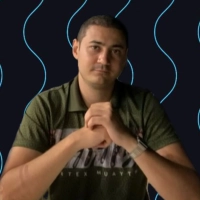How Can HR Develop a Successful Onboarding Program?
Imagine stepping into a job where the onboarding experience feels like an immersive journey rather than a tedious process. HR professionals have shared their secrets to creating successful onboarding programs, starting with the importance of creating an immersive experience and ending with leveraging technology for efficiency. This Q&A style article presents seven unique insights, each offering a fresh perspective on enhancing new hire integration. Discover how these strategies not only improve first impressions but also align with long-term career development.
- Create an Immersive Experience
- Focus on First Impressions
- Set Clear Expectations
- Collect Early Employee Feedback
- Align with Career Development
- Implement a Buddy System
- Leverage Technology for Efficiency
Create an Immersive Experience
One unique approach to developing a successful onboarding program involved creating an immersive experience that prioritized cultural integration alongside traditional training. Instead of merely focusing on policies and procedures, we designed a program that allowed new hires to actively engage with the company culture from day one.
We introduced a mentorship system that paired each new employee with a seasoned team member. This relationship facilitated open communication and provided newcomers with guidance on navigating the workplace dynamics. Mentors played a key role in sharing insights about the company culture and values, making the onboarding process feel more personal and less overwhelming.
In addition to the mentorship, we organized interactive team-building activities during the first week. These events not only fostered connections among new hires but also helped them build relationships with existing staff. This strategy significantly reduced the typical anxiety associated with starting a new job.

Focus on First Impressions
I truly believe that retention starts during the interview process. First impressions truly matter, and it sets the stage for our employees' overall experience with the company. The recruiting process is also a great opportunity to build relationships with candidates. Once the employee begins working with us, I want them to feel comfortable with me and view me as a resource-friendly face. As HR professionals, we need to take pride in the fact that job offers change lives. It's a privilege to partake in that process. The best onboarding programs are communicative—there should be several touchpoints with candidates, and they should be as personal as possible. The onboarding presentation/materials should be comprehensive and never rushed! I also recommend buddy programs, swag bags, introductions, first-day lunches, and timely equipment arrival. It's our responsibility to ensure that new employees are set up for success.
Set Clear Expectations
HR can develop a successful onboarding program by focusing on clear communication and setting realistic expectations from day one. New employees should have a clear understanding of their roles and responsibilities. Consistent and transparent communication helps reduce uncertainty and builds trust within the team.
A foundation of clear expectations can make new hires feel more confident and valued. Implementing this strategy fosters a smoother transition into the organization. Encourage your HR team to assess and improve their communication channels today.
Collect Early Employee Feedback
Providing opportunities for early employee feedback and input can significantly enhance the onboarding process. New hires often see things from a fresh perspective, offering valuable insights that long-term employees may overlook. Creating a culture where feedback is welcomed can lead to continuous improvement in the onboarding program.
This approach also helps new employees feel heard and involved from the beginning, increasing their engagement. Asking for early feedback can pinpoint areas needing attention before they become bigger issues. Start collecting feedback from new hires as soon as possible.
Align with Career Development
Aligning the onboarding process with long-term career development paths is essential for employee retention and satisfaction. New employees should see a clear connection between their current role and future opportunities within the company. This alignment demonstrates that the company is invested in their growth and success.
It can be motivating for employees to understand how their work contributes to their professional journey. Providing a roadmap for advancement helps maintain employee commitment and ambition. Take steps to integrate career development into your onboarding program now.
Implement a Buddy System
Creating a buddy system that pairs new hires with experienced employees can significantly improve the onboarding experience. This system provides new employees with a go-to person for questions, reducing the feeling of isolation and anxiety. A buddy can help navigate the workplace culture and offer insights that might not be covered in formal training.
This peer support can make the transition smoother and more welcome. Establishing a buddy system promotes a sense of community and belonging. Consider implementing a buddy program for new hires immediately.
Leverage Technology for Efficiency
Leveraging technology can make the onboarding process more efficient and engaging for new employees. Digital tools can streamline the paperwork, training modules, and scheduling aspects of onboarding. Interactive platforms can keep new hires engaged and provide easy access to essential resources.
Technology can also facilitate remote onboarding, making it adaptable for diverse work environments. Utilizing digital solutions can improve the overall onboarding experience for everyone involved. Begin exploring technological tools to enhance your onboarding program today.

